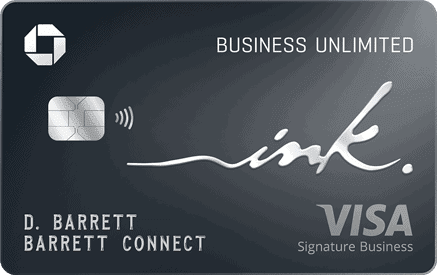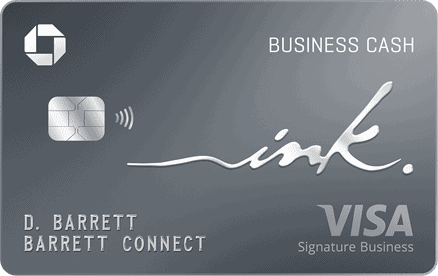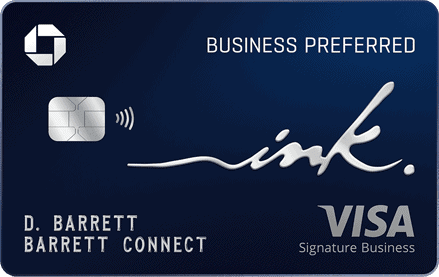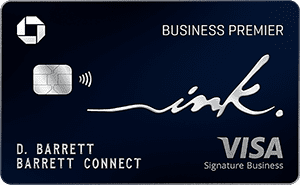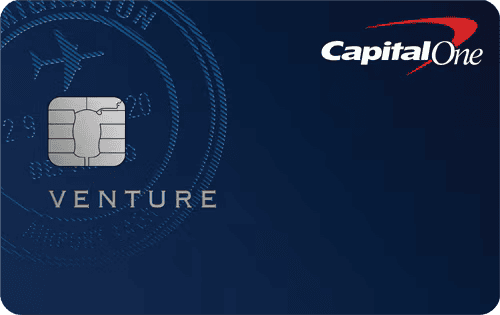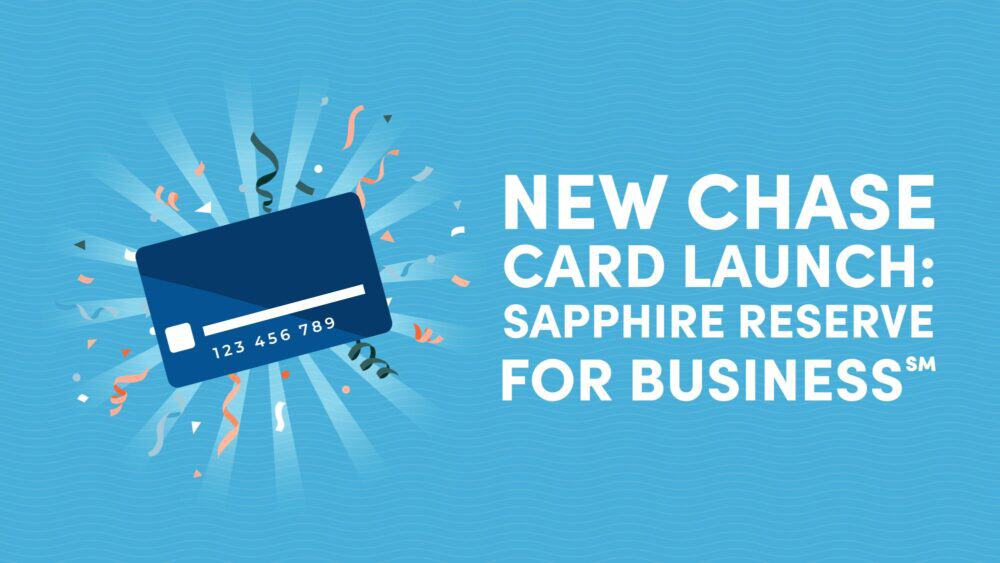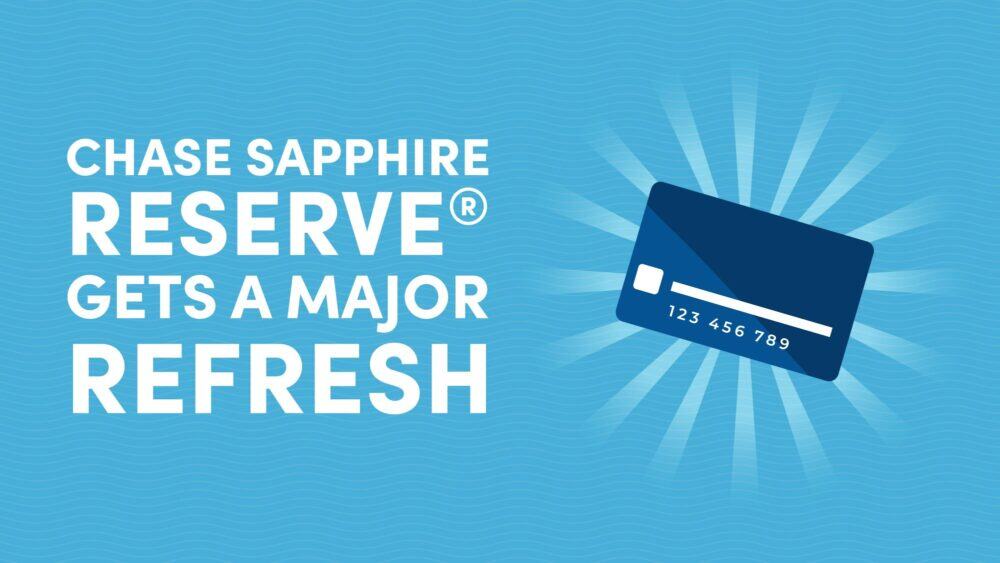
10xTravel is part of an affiliate sales network and receives compensation for sending traffic to partner sites, such as CreditCards.com. This compensation may impact how and where links appear on this site. This site does not include all financial companies or all available financial offers. Terms apply to American Express benefits and offers. Enrollment may be required for select American Express benefits and offers. Visit americanexpress.com to learn more.
Note: Some of the offers mentioned below may have changed or may no longer be available. The content on this page is accurate as of the posting date; however, some of our partner offers may have expired. You can view current offers here.
Like bread and butter, Chase-issued credit cards are a staple among Americans nationwide. In fact, JPMorgan Chase & Co. is the No. 1 card issuer in terms of both card and purchase volume.
Understanding the differences between Chase’s card product families is key to working out which cards are best suited to your travel goals and spending habits. It’s also crucial for understanding how to build a wider credit card strategy through leveraging your earnings across multiple Chase cards for lucrative award travel bookings.
While Chase has a host of co-branded airline and hotel credit cards, the product families we’re looking at in this article are the Ink, the Sapphire and the Freedom families—Chase’s general travel rewards card products.
Chase Product Families: Overview
Before jumping in, here’s a quick overview of Chase’s three product families.
| Chase Product Family | Special Feature | Cards |
|---|---|---|
| Ink | Earning small-business owners cash back and Ultimate Rewards points | • Ink Business Unlimited® Credit Card • Ink Business Cash® Credit Card • Ink Business Preferred® Credit Card • Ink Business Premier® Credit Card |
| Sapphire | Earning Ultimate Rewards points | • Chase Sapphire Preferred® Card • Chase Sapphire Reserve® |
| Freedom | Earning cash back | • Chase Freedom Unlimited® • Chase Freedom Flex® |
Let’s now look at each of these product families in depth.

Chase Ink Cards: Rewards for Business Owners
While Chase is known for its strong portfolio of consumer cards, the Chase Ink Business card family offers equally robust rewards and redemption opportunities.
The Ink product family offers small-business owners four credit cards:
- Ink Business Unlimited® Credit Card ($0 annual fee)
- Ink Business Cash® Credit Card ($0 annual fee)
- Ink Business Preferred® Credit Card ($95 annual fee)
- Ink Business Premier® Credit Card ($195 annual fee)
Chase Ink Business Unlimited® Credit Card
Earn $750
bonus cash back
after you spend $6,000 on purchases in the first 3 months from account opening
Chase Ink Business Cash® Credit Card
Earn $350
bonus cash back when you spend $3,000 on purchases
in the first three months and additional $400 when you spend $6,000 on purchases in the first six months after account opening
Chase Ink Business Preferred® Credit Card
90,000
bonus points
after you spend $8,000 on purchases in the first 3 months after account opening.
Annual Fee: $95
Ink Business Premier® Credit Card
$1,000
Bonus cash back
after you spend $10,000 on purchases in the first 3 months from account opening.
Annual Fee: $195
The Ink Business Preferred Credit Card earns full-fledged Ultimate Rewards points that can be redeemed as cash back or transferred to any of Chase’s 14 airline and hotel partners.
In contrast, the two $0 annual fee cards—the Ink Business Cash and the Ink Business Unlimited—as well as the Ink Business Premier Credit Card, all earn Ultimate Rewards that can be redeemed as cash back only. That means that if you hold one (or all) of these cards from Chase, you won’t be able to transfer your points to airline and hotel loyalty programs.
However, if you hold either the Ink Business Preferred, the Chase Sapphire Preferred® Card or the Chase Sapphire Reserve®, you’re able to combine your rewards earned with the Ink Business Cash or the Ink Business Unlimited, allowing you to then transfer them to Chase’s full list of airline and hotel partners.
That means you can leverage the different bonus spending categories on the Ink Business Cash or the Ink Business Unlimited cards and use these earnings toward lucrative point transfers on an Ultimate Rewards-earning card. Alternatively, you could redeem these points through Chase Travel℠ for more via the Ink Business Preferred, Sapphire Reserve or the Sapphire Preferred.
Unfortunately, the Ink Business Premier doesn’t allow you to transfer its earnings to full-fledged Ultimate Rewards-earning cards, despite having the highest annual fee of all Ink Business cards. Instead, the Ink Business Premier Card is geared toward small-business owners who are interested in simple, strong cashback rewards.
For a detailed breakdown of the Chase Ink Business products, check out our article to find out which Chase Ink Business Card is right for your small business.
| Card | Annual Fee | Features |
|---|---|---|
| Ink Business Unlimited® Credit Card | $0 | • 1.5% cash back on all other purchases • Auto rental collision damage waiver • Employee cards free of charge |
| Ink Business Cash® Credit Card | $0 | • 5% cash back on the first $25,000 spent in combined purchases at office supply stores and on internet, cable and phone services • 2% cash back on the first $25,000 spent in combined purchases at gas stations and restaurants • 1% cash back on all other purchases • Auto rental collision damage waiver |
| Ink Business Preferred® Credit Card | $95 | • 3X points on the first $150,000 spent in combined purchases in the following categories: shipping, advertising purchases made with social media sites and search engines, internet, cable and phone services, travel • 1X points on all other purchases • Points are worth more when you redeem thru Chase Travel℠ • Trip cancellation and interruption insurance • Cell phone protection plan • Auto rental collision damage waiver |
| Ink Business Premier® Credit Card | $195 | • 2.5% cash back on purchases of $5,000 or greater • 2% cash back on all other purchases • Auto rental collision damage waiver • Cell phone protection • Employee cards free of charge |
Chase Sapphire Cards: Transferable Ultimate Rewards
The two siblings of the Chase product family—and two of Chase’s most popular cards—are the Chase Sapphire Preferred Card and the Chase Sapphire Reserve.
The Sapphire Preferred originally hit the market in 2009 and was followed by its sibling card—the Sapphire Reserve—in 2016. Since their arrival, they’ve proven to be some of Chase’s most popular travel rewards credit cards.
Chase Sapphire Preferred® Card
75,000
bonus points
after you spend $5,000 on purchases in the first 3 months from account opening.
Annual Fee: $95
Earn 100,000
bonus points + $500 Chase Travel℠ promo credit
after you spend $5,000 on purchases in the first 3 months from account opening.
Annual Fee: $795
The Sapphire Preferred Card offers strong bonus spending categories, robust travel protections and a wide array of redemptions options for an annual fee of $95. The Sapphire Reserve comes with the same baseline benefits as well as additional luxury travel perks and higher protection limits for an annual fee of $795.
Both cards earn transferable Ultimate Rewards points, which you can transfer to any of Chase’s 14 airline and hotel partners at 1:1 ratios. Likewise, points are worth more when you redeem thru Chase TravelSM.
As already mentioned, the Sapphire Preferred and the Sapphire Reserve allow point pooling with the Ink Cash and the Ink Unlimited cards as well as with the Chase Freedom Flex® and the Chase Freedom Unlimited®, making them powerhouses when it comes to pooling your points and making award travel redemptions.
Additionally, both cards offer arguably the most comprehensive range of travel insurance protections. This is especially the case for the Sapphire Preferred Card given its comparatively low annual fee—you won’t find such a wide range of protections on any other card for $95 per year.
If you’re trying to decide between one of the two Sapphire cards, check out our detailed Chase Sapphire Preferred vs. Sapphire Reserve review.
| Card | Annual Fee | Features |
|---|---|---|
| Chase Sapphire Preferred® Card | $95 | • 5X points on travel booked through Chase Travel℠ (excluding hotel purchases that qualify for the $50 annual hotel credit) • 3x on dining, select streaming services and online groceries • 2X points on all other travel purchases • 1X points on all other purchases • Annual 10% points bonus • Annual $50 hotel credit • Points are worth more when you redeem thru Chase Travel℠ • Range of travel insurance perks • Primary auto rental collision damage waiver |
| Chase Sapphire Reserve® | $795 | • $300 annual travel credit • 8X points on car rentals and hotels booked through Chase Travel℠ (applies after the first $300 is spent on annual travel purchases) • 4X points on flights booked via Chase Travel℠ (applies after the first $300 is spent on annual travel purchases) • 3X points on dining worldwide and eligible delivery service purchases, takeout and dining out • 4X points on travel purchases (applies after the first $300 is spent on annual travel purchases) • 1X points in all other categories • Points are worth more when you redeem thru Chase Travel℠ • Up to $120 statement credit reimbursement for Global Entry or TSA PreCheck application fee every four years • Complimentary Priority Pass Select™ membership • Range of travel insurance perks • Primary auto rental collision damage waiver |
Chase Freedom Cards: Cashback Rewards
Last but far from least is the Chase Freedom product family.
The Chase Freedom family offers two main cards to choose from:
$200
Bonus
after you spend $500 on purchases in your first 3 months from account opening
$200
Bonus
after you spend $500 on purchases in your first 3 months from account opening
The Chase Freedom family also includes the Chase Freedom Rise®, but it’s a card designed for those looking to build their credit.
The Chase Freedom Flex and the Chase Freedom Unlimited both earn Ultimate Rewards points that can be redeemed for cash back only. That’s unless you simultaneously hold one of the two aforementioned Sapphire cards or the Ink Business Preferred, in which case you can transfer your points to these cards for transfer partner redemptions.
By pursuing a two-card combo strategy such as this, you can turn already-competitive cashback earnings into even more lucrative travel rewards.
All Chase Freedom products are $0 annual fee cards, making them easy to pair with one of Chase’s full-fledged Ultimate Rewards-earning cards.
While the Chase Freedom Unlimited shoots for simplicity, the Freedom Flex offers the best of both worlds with rotating and fixed cashback bonus spending categories. Often, hardcore points and miles enthusiasts end up holding both cards. This way, they benefit from the Freedom Flex’s rotating 5% bonus spending categories (which require quarterly activation) as well as the Freedom Unlimited’s baseline rewards rate of 1.5% cash back on all purchases.
If you then plan on transferring your points to a Sapphire card, you’re effectively earning a baseline rewards rate on the Freedom Unlimited of 1.875% cash back (for Sapphire Preferred transfers) or 2.25% cash back (for Sapphire Reserve transfers), given their fixed Chase Travel℠ redemption rates.
If you’re stuck between deciding on one of the two Freedom products or even considering holding both, check out our Chase Freedom Flex vs. Chase Freedom Unlimited review.
| Card | Annual Fee | Features |
|---|---|---|
| Chase Freedom Unlimited | $0 | • 5% cash back on travel purchased through Chase Travel℠ • 3% cash back on dining and at drugstores • 1.5% cash back on all other purchases • Trip cancellation and interruption insurance • Secondary auto rental collision damage waiver |
| Chase Freedom Flex | $0 | • 5% cash back on rotating bonus spending categories on up to $1,500 in combined purchases every quarter • 5% cash back on travel purchased through Chase Travel℠ • 3% cash back on dining and at drugstores • 1% cash back on all other purchases • Trip cancellation and interruption insurance • Secondary auto rental collision damage waiver |
Final Thoughts
Overall, Chase’s three product families—Ink, Freedom and Sapphire—offer their own individual benefits and can also be leveraged simultaneously for lucrative redemption opportunities.
Whether you’re deciding on opening a Sapphire card versus a Freedom card, or both, keep Chase’s 5/24 rule in mind. Prioritize Chase cards that will earn you the greatest rewards on your individual spending habits while offering the best opportunities for redemption toward your specific travel goals.
New to the world of points and miles? The Chase Sapphire Preferred® Card is the best card to start with.
With a bonus of 75,000 bonus points after you spend $5,000 on purchases in the first 3 months from account opening. , 5x points on travel booked through Chase Travel℠ and 3x points on restaurants, streaming services, and online groceries (excluding Target, Walmart, and wholesale clubs), this card truly cannot be beat for getting started!
after you spend $6,000 on purchases in the first 3 months from account opening
in the first three months and additional $400 when you spend $6,000 on purchases in the first six months after account opening
after you spend $8,000 on purchases in the first 3 months after account opening.
after you spend $10,000 on purchases in the first 3 months from account opening.
after you spend $5,000 on purchases in the first 3 months from account opening.
after you spend $5,000 on purchases in the first 3 months from account opening.
after you spend $500 on purchases in your first 3 months from account opening
after you spend $500 on purchases in your first 3 months from account opening
Editors Note: Opinions expressed here are author’s alone, not those of any bank, credit card issuer, hotel, airline, or other entity. This content has not been reviewed, approved or otherwise endorsed by any of the entities included within the post.



